Typically hired from a high street tool hire shop, their light alloy components can be self-assembled, providing a relatively cheap option when prolonged periods of work at height are anticipated. Good for camera and lighting positions, and working alongside sets, as well as a host of other uses.
What Can Go Wrong?
- Falls from height – could occur whilst erecting it (before proper edge protection is in place) or when accessing the working platform.
- Manual handling injury – can result when erecting or dismantling the tower components, or when lifting equipment up to platform level.
- Struck by falling objects - you could drop pieces of the tower or your work equipment onto others when erecting the tower or when working at platform level
- Collapse or overturn of tower – could occur if component parts fail, are not erected correctly, the tower is overloaded, poorly positioned (e.g. on uneven or soft ground) or it is struck by a vehicle
Legal/���˿��� Requirements
- Ensure work at height is properly planned and organised.
- Those involved in work at height are competent.
- Risks from work at height are assessed, and appropriate work equipment is selected and used.
- The risks of working on or near fragile surfaces are properly managed.
- Equipment used for work at height is properly inspected and maintained.
Control Measures
Planning your work at height
- Through risk assessment, decide if a tower scaffold is the most suitable means of access – if necessary, seek advice from your Safety Adviser.
- Source the tower from a reputable supplier (e.g. a High Street tool hire company), who will provide one which meets safety standards, confirm it is in serviceable condition, and provide a clear set of instructions for its safe construction and use – avoid ‘borrowing’ towers unless you are confident all of the requirements listed in these Guidelines will be met.
- Whilst they don't need a scaffolding ticket, ensure those who erect / dismantle and use the tower scaffold are physically fit, confident when working at height and build the structure through the trap access or use advanced guardrails.
Tower construction
- Erect and dismantle the tower in accordance with the supplier’s / manufacturer's safety instructions – make sure you have all the pieces, don't improvise.
- Site the tower on firm, level ground. Where this isn't practical, use footplates, chocks and spreader boards to prevent it sinking/toppling by keeping the uprights vertical.
- Consider need for head protection (i.e. hard hat or climbing helmet) for those building the tower or working on, or underneath it.
- Ensure adequate edge protection at platform level – secure hand rails at approx. 1m height, with mid-rails and footboards.
- Ensure outriggers provided on main uprights – where this isn’t practical (e.g. due to obstructions), take other measures to prevent it over-turning (e.g. against or tied to a solid structure).
- Prior to use, thoroughly inspect the tower to ensure it meets the supplier’s design instructions – as needed, inspect it regularly thereafter to ensure this remains true.
- If used outdoors, consider risks from wind loading, particularly if using any large drapes, diffusion boards, panel lights, etc. - additional ballast to the base may be needed, or reduce the height of the tower (consult supplier's instructions).
Tower use
- Position tower away from pedestrian / vehicle routes and overhead power lines.
- When in position, lock any castors to prevent movement in use – never move the tower with persons aloft.
- Gain access to the working platform via internal ladder and re-closing trapdoors after use. Where these aren't provided (e.g. when hiring older versions overseas), you will need to identify safe means of access which may require use of a harness and climbing lanyards (speak with your Safety Adviser).
- Raise and lower equipment by handing it between platform levels, or by using an external rope and pulley system.
- When working at platform level, do not stand on anything to gain extra height.
- Where members of the public may come close to the tower, maintain an exclusion zone around the base, enforced by fencing or boarding.
- If left unattended in public areas (especially if children may be present) take steps to prevent unauthorised access, either by removing ladders, adding netting, providing security, or if none of these aren’t practical, you may need to dismantle it.
Documentation
- Ensure that you have assessed the work at height risks in your programme risk assessment, including identifying any deviations from recognised good practice.
Division Specific Issues
- No division specific issues.
FAQs/Did You Know?
- Falls from height regularly top the list of causes of serious workplace accidents.
- Whilst distinct from tubular scaffolding, tower scaffolds need still comply with work at height regulations, including being supervised by a competent person, have appropriate edge protection, suitable ladders and be a stable structure.
- If using outdoors, the strength and firmness of the ground/base (consider soft or waterlogged soil, buried trenches, etc.) and possible wind loading may significantly reduce the stability of the structure and therefore the maximum height it can be used safely.
Useful documents
-
[���˿��� Network only]
Recommended links
-
-
Training standards & qualifications
-
Working at Height topics
-

General
Guidance to assist planning, conducting or managing staff who are working at height -
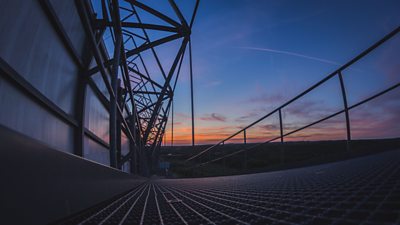
Gantries & High Level Platforms
Guidance on media positions within stadiums and arenas -

Ladders
Guidance on ladders to work up to approx. 6m high -

Ladder Pods
Guidance on ladder pods to work up to 5m high -
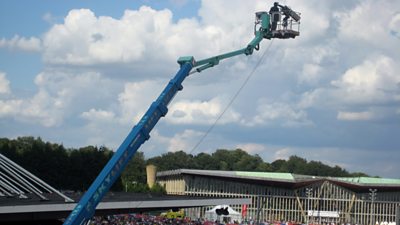
Mobile Elevating Work Platforms
Guidance on mobile elevating work platforms (MEWP) such as cherry pickers and scissor lifts. -
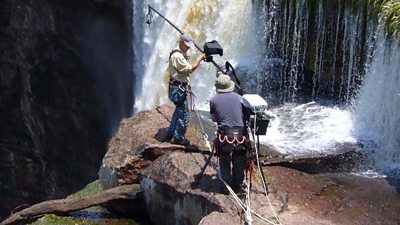
Rope Access Techniques
The equipment and techniques required to protect those working at or near exposed drops. -
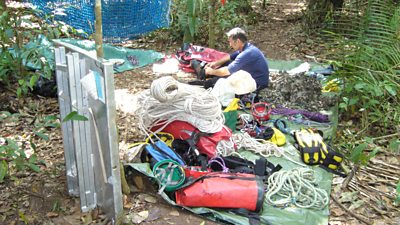
Ropes Riggers: Selection of
Competence criteria for the various professional Ropes Riggers. -
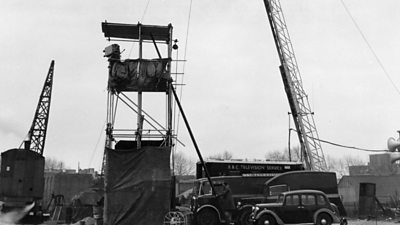
Tower Scaffolds
Guidance on tower scaffolds to work up to approx 8m high
More from SSR
-
Your platform to record accidents, risk assessments, assurance monitoring and inspections
-
Safety Equipment Stores
Just one number to call: 020 3614 5155 -
���˿��� Safety Guidelines
An A-Z of ���˿���'s Health and Safety Guidelines -
Safety Advice Line: 0370 411 0464 Email: safety@bbc.co.uk
- A-Z of ���˿��� Safety Guidelines
- Accident Reporting and Investigation
- ���˿��� Health & Safety Policy
- Contractors (incl. vetted lists)
- Contributors
- Fire Safety
- Freelancers
- Independent Production Companies
- Risk Assessment
- Safety Alerts
- Safety Responsibilities
- Safety Training
- Sets & Premises Safety Guide
Events guidance - key links:
- Exhibitions
- General Guidance
- Indoor Location Recce Checklist
- Outdoor Location Recce Checklist
- Major Incidents & Emergency Planning
- Marketing and Promotional
- Noise Exposure
- Planning and Management
- Responsibilities
- Responsibilities Form
- Laser Lighting Effects
- Strobe Lighting
- Temporary Stages and Rostra
Health topics - key links:
- (���˿��� network only)
- Contributors Fitness to Participate
- Display Screen Equipment (DSE)
- (���˿��� network only)
- First Aid and Welfare on Location
- International Travel - Risks & Health
- Manual Handling
- Mental Health: ���˿���page
- (���˿��� network only)
- Personal Health and Wellbeing
- Pregnancy
- Psychological Trauma Support & Trauma Risk Management (TRiM)
- Tiredness and Fatigue
- Travel Health Contacts
���˿��� High Risk - key links:
- CBRN and Industrial Spills
- Covert Filming
- Crisis Management and Security Support
- Demonstrations, Protests and Crowds
- Disaster Coverage
- Door Stepping
- (���˿��� network only)
- (���˿��� network only)
- Public Order
- Safety Equipment Stores
���˿��� Journalism - key links:
���˿��� Productions - key links:
- Aerial Filming and Airfields
- Animals: Displaying and handling for performance
- Boats: Working on
- Children and Young People
- Driving
- Electrical Equipment and Systems
- First Aid and Welfare on Location
- Food Safety (Cooking and Catering)
- Remote Location Working
- Roads and Streets: Working by
- Security of Productions on Location
- Stunts
- Tiredness and Fatigue
- Unmanned Aerial Systems (UAS aka Drones)
- Vehicles: Recording in, from and around
- Working at Height: Mobile Elevating Work Platforms
- Working at Height: Tower Scaffolds
���˿��� Radio - key links:
- (���˿��� Network only)
���˿��� Security - key links:
���˿��� Sport - key links:
About this site
This site describes what the ���˿��� does in relation to managing its health, safety and security risks and is intended for those who work directly for the ���˿���.
It is not intended to provide instruction or guidance on how third parties should manage their risks. The ���˿��� cannot be held liable for how this information is interpreted or used by third parties, nor provide any assurance that adopting it would provide any measure of legal compliance. More information
Some links on this site are only accessible when connected to the ���˿��� network

